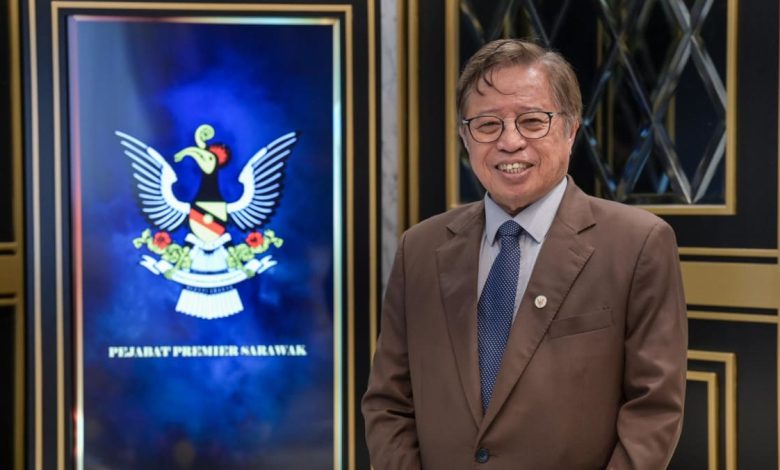Sarawak’s rapid growth, lofty plans should not be seen as desire for independence: Premier Abang Johari

With that said, Mr Abang Johari is aiming for Sarawak to be the second highest contributor to Malaysia’s gross domestic product (GDP) before the next state polls due by 2026.
According to data from the Statistics Department of Malaysia that was released in July, Sarawak contributed 9.1 per cent to the GDP in 2023, coming in fourth behind Selangor (25.9 per cent), the Federal Territory of Kuala Lumpur (15.9 per cent) and Johor (9.5 per cent).
To this end, Sarawak is trying to emulate countries that have invested heavily in infrastructure to boost economic development, the Premier said.
“What Sarawak is doing now is to enhance our infrastructure, because we’ve got the strength, including energy, and we build our internal domestic connectivity,” he said, adding that the state is working with investors to build its economy.
“We are getting investment to Sarawak, and the benefits will be shared with the investors as well as the Sarawak government or, for that matter, Sarawak as a whole.”
But Sarawak’s pace of development and lofty ambitions should not be construed as a desire for independence, Mr Abang Johari said, dismissing calls by some Sarawak activists for the state to exit Malaysia.
These activists are frustrated with what they perceive as a chronic lack of progress by the federal government in returning Sarawak’s rights under the Malaysia Agreement 1963, the legal basis of the formation of Malaysia with Sarawak and Sabah as equal partners with Malaya.
“Of course, the federal government also acknowledged how we governed the state and how we moved forward. It doesn’t mean that there is an urge for us – some (have this) perception – (to go) on our own,” Mr Abang Johari said.
FREE TERTIARY EDUCATION
One area where Sarawak is going on its own is its plan to offer free education for Sarawkians in its five state-owned universities.
These are the Curtin University Malaysia Sarawak Campus, Swinburne University of Technology Sarawak Campus, University Technology Sarawak, Centre of Technology Excellence Sarawak, and i-CATS University College.
Local media had previously reported that some 25,000 students in Sarawak’s state-owned universities and higher-learning institutions stand to benefit from the proposed policy, which is expected to cost the government up to RM625 million a year.
The Sarawak government, however, has said that the free education will only apply to selected science and technical fields, in line with the state’s development plans and to optimise resources.
Opposition Sarawak assemblyman Chong Chieng Jen, from the Democratic Action Party, questioned these exceptions, calling it a “lame excuse”.
“Is there some hidden problem with the Sarawak government’s financial situation that it can now no longer come up with the fund?” he was quoted as saying in an Aug 29 Dayak Daily report.
CNA has contacted Sarawak’s Ministry of Education, Innovation and Talent Department for more details on which courses will be fully subsidised and the number of students who will benefit.





